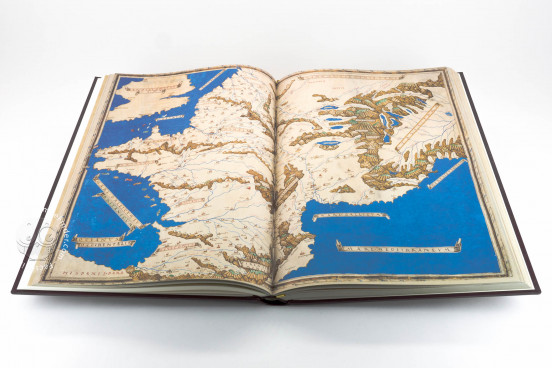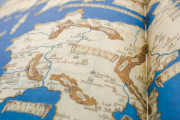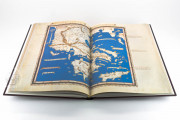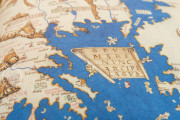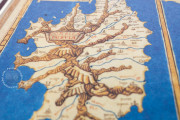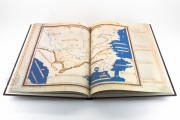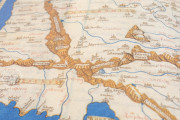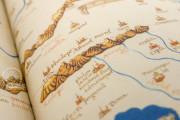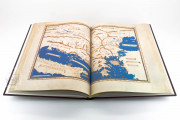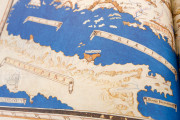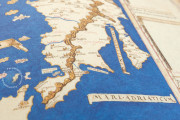The extraordinary antiquities fund of the Biblioteca Nazionale Centrale di Firenze (BNCF) conserves a work of exceptional beauty and historical interest, known as the Grande Tolomeo or Codice Magliabechiano. It is a manuscript collection of geographical maps based on the studies of Ptolemy and termed Cosmographia Jacobo Angelo interprete, cum tabulis Henrici Martelli Germani.
The Most Impressive Map of the Medieval World
The work consists of thirty-nine plates and respective comments, that is, the introductory pages of each section which occupy seventy-two complete sheets of the codex for a total of 144 pages, in addition to the initial pages with dedication and incipit.
Made in Florence by Enrico Martello Germano around 1480, it is one of the world's most impressive and fascinating Renaissance geographical codices in existence. Not only an aesthetic masterpiece, this work constitutes a document of unique interest in the history of cartography, marking a decisive watershed.
While on one hand, it is a painstaking elaboration of ancient Greek knowledge, ignored for a millennium and updated with then recent European navigations in the Atlantic and in eastern seas, on the other hand it is also the last collection of geographical maps before the discovery of America.
The History of an Exceptional Work
The codex was commissioned by the Vitelli family of Città di Castello (whose crest is reproduced on the cover) and opens with an illuminated map with gold inserts, inspired by the frescoes of Nero's Domus Aurea.
Claudius Ptolemy (Klaudios Ptolemaios in Greek, Claudius Ptolemaeus in Latin, ca. 85 AD – 165 AD ca.), known simply as Ptolemy, was a Greek astronomer of the imperial age who lived and worked in Alexandria in Egypt.
Considered one of the fathers of geography, he was the author of numerous scientific works, the most important of which is the astronomical treatise known as the Almagest (in Greek, Hè Megalè Syntaxis, The Great Treatise).
Like most of classical Greek science and philosophy, he has come to the present day in Arabic manuscripts which were then translated into Latin by Gherardo da Cremona only in the twelfth century.
We have 1 facsimile edition of the manuscript "Magliabechiano Ptolemy": Ptolomei Cosmographia facsimile edition, published by Vallecchi, 2004
Request Info / Price
